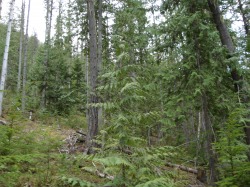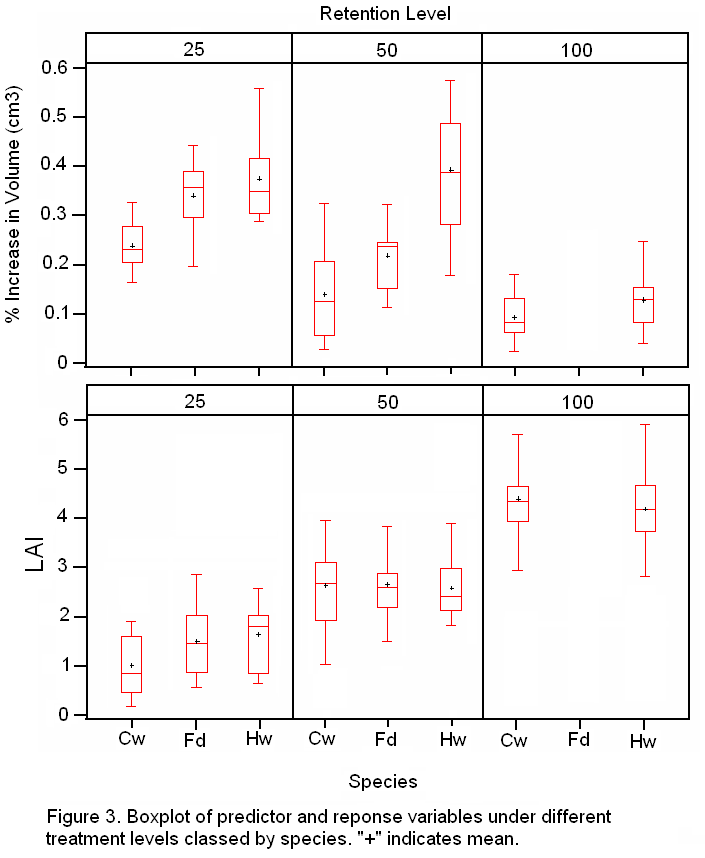
Data
was organized with the following Column headings ID Plot Ret Species
LAI DIFN dHt Vol. Measurements taken on Douglas-fir in the control
were deleted (as only tree was found within three treatment blocks. The
assumptions of statistical tests are outlined: The assumption of
normality holds valid for all samples in the reponse variables (LAI,
DIFN, dHt (change in height) and Vol) (Fig 3); as they are
approximately symmetric.
According to Levene's test
for homogenity in variance, equal variance assumption does hold true
(F(2,130) = 1.86, p = 0.16). The predictor variable LAI was
normal and accoriding to Levene's test it showed signs
of heteroskedasticity (F(2,120)=0.02, p = 0.9789).
The response variable Vol was found to be normal and the
violation of equal variances isn't severe (F(2,130)=1.56, p =0.216).

All
inferences are generalized to ICH mixed stands of Western redcedar,
Douglas-fir, and Western hemlock, growing on a substantial slope (30%).
This creates a specific population from which inferences can be
generalized.
Growth data was collected over one year. This
gave tremendous variablity with the reponse variables (Vol and dHt).
Assessing growth over one growing season gives rise to many confounding
factors, like wet or dry years, damaging agents etc. Thus, the
results obatined in this study could drastically vary from year to year.
The
amount of samples was enough to describe the variation within each
treatment, but the amount of treatment replicates was lacking in
describing the treatment levels. Due to the costs associated with
sampling treatment levels; the study was forced to use two replicates
of each treatment-level, with the exception of the control, where three
replicates were used. Thus, the predictive power associated with this
study is marginal.
The prevalence of confounding
factors was common. This could be due to the lack of measurements
for other factors. For instance, microclimatic data would need to be
taken to get the full assesment of species reponse to microsite
gradients (not just light).
The likely effects of these
limitations is a reduction in the pedictive power of this study.
Inferences are generalized to a specific population. Variation is
realtiviely high leading to a need for an increase in sample size to
limit type II error and measurement of more predictor variables to
reduce a confounding effect.

The predictor variables (Retention, Species, LAI, and DIFN) formed the following hypotheses. Light (DIFN) was greatest with the least amount of retained trees. LAI was greatest with the least amount of retained trees. The reponse variables (dHt, dDia (change in diameter) and dDBH (change in diameter at breast hieght)), are parameters for volume equations. They follow the general trend of shade tolerance rankings, where the occurance of Douglas-fir in 100% retention prescriptions is almost nill, though it has the one of the highest growth gains in low light environments.